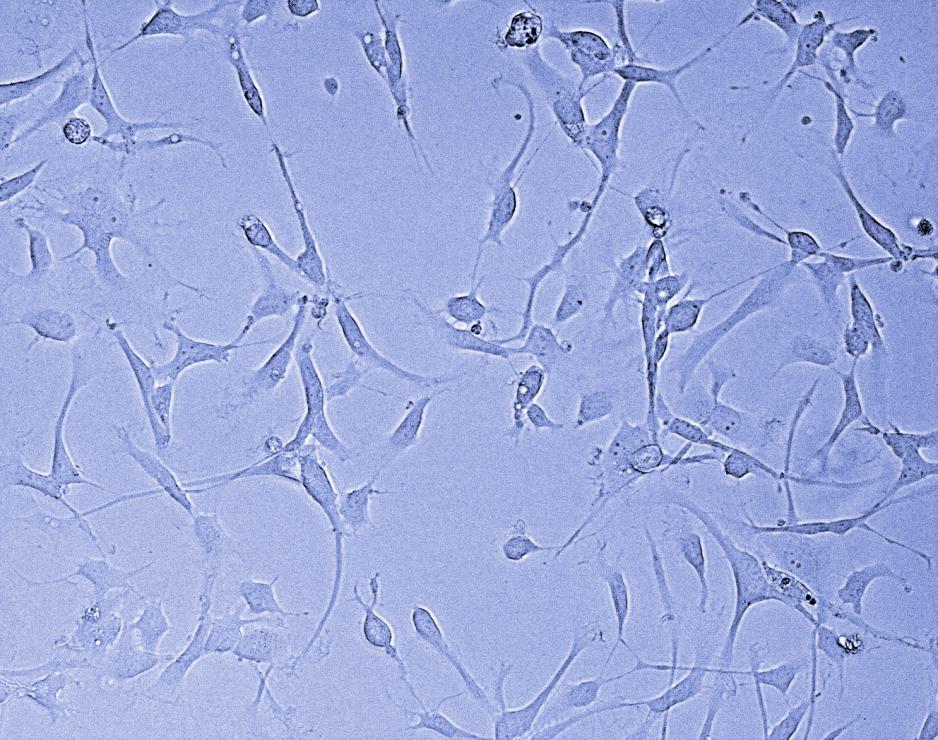Graham MacLeod, a post-doctoral researcher at U of T’s Leslie Dan Faculty of Pharmacy, used CRISPR-Cas9 screens to reverse engineer glioblastoma stem cells and uncover potential new treatment targets for brain cancer (photo by Steve Southon)
Researchers at the University of Toronto, The Hospital for Sick Children (SickKids) and the University of Calgary have ‘reverse engineered’ glioblastoma stem cells to uncover potential targets to treat the devastating form of brain cancer.
The findings were published today in the journal Cell Reports, making this the first published study to systematically profile a large panel of patient-derived brain tumour cells that have stem cell properties.
Glioblastoma is a difficult-to-treat form of cancer that is a leading cause of cancer-related death in children and young adults.
“We think that, in one big experiment, we have uncovered many new targets for glioblastoma, some of which were surprising,” said Dr. Peter Dirks, who is a co-principal investigator of the study and staff neurosurgeon and senior scientist at SickKids.
“These glioblastoma stem cells are also resistant to treatment, which is one reason that these tumours are so hard to cure."
"We need new ways to disrupt these cells specifically if we are going to give people a better chance of survival.”
The research team also found that adult glioblastoma cells are dependent on the same genes that are important for brain development in infancy and early childhood. “This really emphasizes how much research needs to be done to understand the developing human brain,” said Dirks, who is also a professor in U of T’s department of surgery and, in 2003, was the first to discover the existence of cancer stem cells in brain tumours.
Dr. Stéphane Angers, co-principal investigator of the study and a professor at the Leslie Dan Faculty of Pharmacy, specializes in the use of CRISPR-Cas9, a powerful new way to explore cancer biology through genome-wide screens.Taking 10 unique patient-derived glioblastoma stem cell cultures collected by the Dirks research team, the Angers lab used CRISPR “cell fitness screens” to determine which genes in the cancer stem cells were required for the cells to survive and to grow – and were therefore important for tumour progression.
“Cancer stem cells fuel the growth of tumours and progression of the disease,” said Angers. “In order to effectively target these cells, having a comprehensive view of the genes controlling the growth programs is critical.
“If you know which genes are necessary for these cells to survive and proliferate, you can then look at ways to attack or block these genes and stop tumour growth in its tracks.”
By systematically knocking out each of the 20,000 genes, one at the time, from each of the 10 patient samples, the Angers team found multiple genetic vulnerabilities and revealed a wealth of data that can be further mined to identify possible drug targets for glioblastoma.
“This is one of the first studies of its kind where CRISPR screens are performed directly in multiple freshly isolated patient cells in parallel,” Angers said. “This study has provided a massive amount of new information that the research community can now interrogate to help design new treatment strategies.”
One gene identified in the study, known as DOT1L, was found to be necessary for tumour persistence in seven of the 10 glioblastoma patient tumour cultures. In collaboration with Samuel Weiss at the University of Calgary’s Cumming School of Medicine, the team used preclinical models to demonstrate the effectiveness of a drug currently used to treat leukemia to inhibit the DOT1L gene product in glioblastoma stem cells.
“We found that blocking this specific protein in this particular form of brain cancer reduced tumour growth and resulted in longer survival in the preclinical model,” said Angers. “This is promising because it uncovered a biological process not previously suspected to be implicated in glioblastoma, for which a small molecule drug already exists.”
In recent years, significant time, effort and funding dollars have been spent on the genomic sequencing of cancer tumours. While this has given researchers a clearer picture of the hundreds of genetic mutations present in glioblastoma and other cancers, it has not led to any significant treatment advances for glioblastoma, Angers said.
“This shows that just knowing about genetic mutations is not enough,” said Graham MacLeod, a post-doctoral researcher at the Angers lab and co-first author of the study.
“That is a static picture of cancer. We are learning that we need to better understand the blueprint of how this cancer functions and what specific genes fuel tumour growth in order to attack it.”
The research was supported by Genome Canada, the Canadian Institutes of Health Research, the Ontario Institute for Cancer Research and SickKids Foundation.
More News
Image

Dean Lisa Dolovich reappointed for second term
Professor Lisa Dolovich has been reappointed for a second term as Dean of the Leslie Dan Faculty of Pharmacy, University of Toronto, effective July 1, 2025, to December 30, 2030.
Read More
Image

Pharmacy Summer Camp gives high school students insight into pharmacy profession
A new summer camp based at the faculty will give high school students a range of experiences in pharmacy and pharmaceutical sciences.
Read More
Image

Team GloveLift wins 2025 Business Plan Competition with innovative medical device
PharmD students win $5,000 prize for their innovative medical device concept aimed at improving patient care.
Read More

